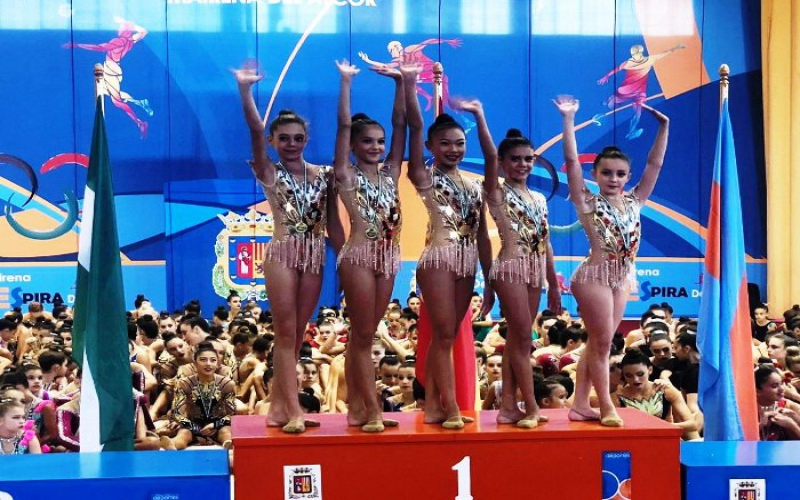
For many people, rhythmic gymnastics is not just a kind of sport but it is an occupation which they devote a lot of strength and time from the early childhood. Many young girls starting from early years dream to be elegant, flexible and feminine like professional gymnasts. So, here comes the question from what age should one actually start classes? How to become a gymnast? What are the myths about this kind of sport?
AGE
According to general experts thinking the ideal age for the mastering of rhythmic gymnastics is 5-6 years old. But why is that so early? It is exactly at this age that the body of the girl is in constant development and the muscles are only formed and more easily exposed to stretching and physical load. Is it possible to start later, for example, at the age of 10? Yes, it is possible but it will be much harder and more energy-efficient and to achieve the desired result will require twice as much effort and patience.
GOAL
In order to start classes in rhythmic gymnastics one must also decide on the goal and the result which should be achieved at the end: whether it is for the general development of a child or to build a successful career. If a child is attracted to competitions, awards and championships then it is better to pay more attention for choosing such serious and important things as the school and gymnastic coach. But if the main goal is purely physical development then such attention will be superfluous. Either way in both cases the result will depend not only on the chosen school, but also on the child's desire and diligence.
WHAT IS NECESSARY FOR THE GYMNASTIC CLASSES
The very first thing one needs for classes is a sports uniform, namely a leotard for rhythmic gymnastics. For training, at once you do not need a "concert version" leotard with different rhinestones and sequins as they will only interfere with the workouts. The main requirement is that gymnastic leotard should be comfortable. Shoes for gymnastic classes are lightweight gym shoes which should also be as convenient as possible.
Special equipment such as ball, hula hoop and ribbon will also be required for classes. Before buying anything it is better to consult a coach who will give all the necessary recommendations. By the way, some schools offer their own equipment that is quite comfortable.
USEFULNESS AND POSSIBLE DANGER OF GYMNASTIC CLASSES
Rhythmic gymnastics is one of the most balanced and many-faceted kind of sport. Gymnastic classes have a positive effect on the health of the child, they develop flexibility and endurance and also improve body posture. Rhythmic gymnastics, without doubts, affects the character of the child. In the course of classes girl’s character becomes tempered and also the discipline and responsibility are developed. There appears confidence as well and the ability to show oneself that it is equally important.
MYTHS
Choosing the rhythmic gymnastics as a primary occupation for the child many parents are faced with certain myths associated with this kind of sport.
#1. Every girl can become a gymnast. No doubt, anyone can try to connect his or her life with this kind of sport, but there is no guarantee that everyone will be able to reach the highest peaks! Everything depends on persistency, diligence and physical training.
#2. Rhythmic gymnastics is simple. At first glance, this may be true because gymnasts move with incredible ease and elegance. But in reality, behind that are years of hard work through sweat and tears. Gymnastic classes require systematic work. For real one should train at least 2-3 hours 5-6 times a week.
#3. Gymnasts almost do not eat. It is a very common myth. But where do they take a power for constant training? Though the athlete's diet differs from the usual one, it is recommended to control the consumption of some products, for example, sweets. But this does not mean that gymnasts almost do not eat.
#4. Gymnasts do not have a full fledged childhood. In spite of constant training and heavy physical load the child receives a lot of positive moments and benefits from gymnastics like victories in competitions, new acquaintances and a reliable circle of communication. Is not that the basis of childhood?
Consequently, persistency and desire are the main components of rhythmic gymnastic classes. Whatever your child chooses the constant competitions or purely physical development all this will bring her many benefits and positive emotions. And the sooner one starts doing rhythmic gymnastics, the better.